The Red-Wing Blackbird
The wild red-wing black-
bird croaks frog-
like though more shrill
as the beads ofhis head blaze over the
swamp and the odors of the swamp
vodka to his nostrils
I notice spring birds before spring buds … and just the other day, the Red-winged Blackbirds were vocalizing over a Kirkland swamp. In my periphery I saw the crimson flashes of male birds flitting between reeds, and then females clinging to cattail puffs.
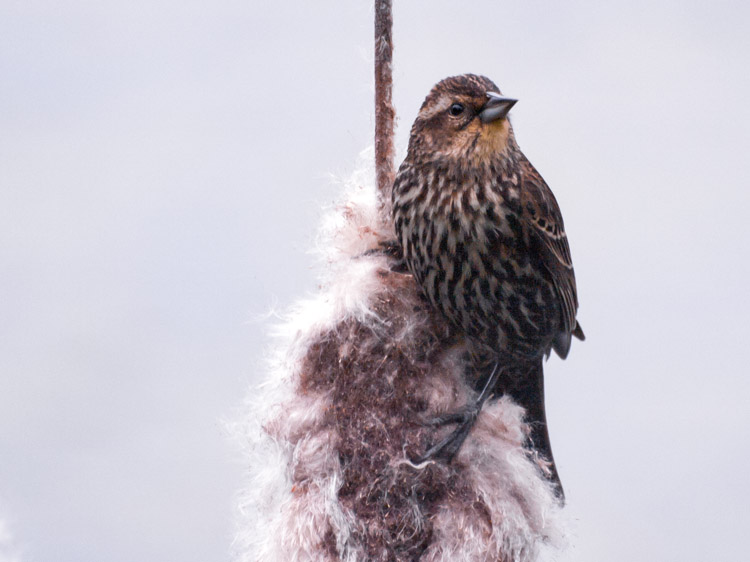
Female Red-winged Blackbird on a cloudy day at Greenlake – Seattle – ©ingridtaylar
As much as I enjoy their displays and the trill of the male’s call — the one people identify as the sound “oka-reee” — I didn’t realize that the Red-winged males sometimes have harems as large as fifteen ladies or more. They are are polygynous: single red-and-black males seeking harems.
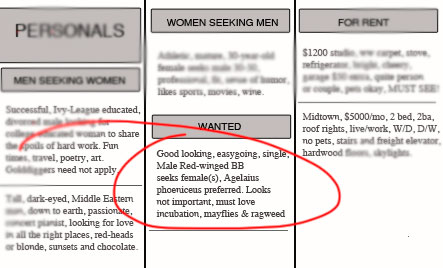
The males stake out their turf and call in the females with their flourishes. Then, once multiple partners are settled in their nests, the female blackbirds do the bulk of the feeding and raising of the young. This book excerpt summarizes the situation in the marsh:
During the breeding season, male redwings are territorial, each defending a portion of marsh or, in some regions, upland. Redwings also defend their territories against Yellow-headed Blackbirds (Xanthocephalus xanthocephalus), but they are often displaced from better quality areas by the larger yellow heads …. Redwings are strongly polygynous throughout their range. Harems, which average three to five females but may range up to fifteen or more, tend to be larger on the more productive marshes of western North America than elsewhere ….Male rewings do not participate in nest building or incubation, and, in our study area, most of them do not feed nestlings …. Feeding of nestlings is more prevalent among older males throughout the range of the species and in eastern than in western North America …. Apparently, no strong bonds are formed between males and females. Even during the breeding season, mated individuals move around relatively independently of each [other] — both in daily activities and between breeding efforts.”
~ Red-winged Blackbirds: Decision-making and Reproductive Success by Les D. Beletsky and Gordon H. Orians (p.5)
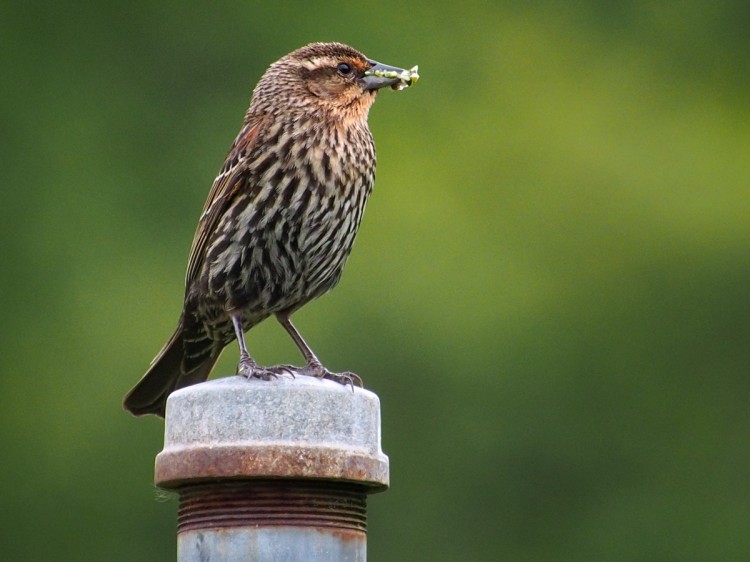
Female Red-winged Blackbird with food – Seattle – ©ingridtaylar
I see Red-winged Blackbirds as often as just about any other bird, but looking through my images from recent years, I have precious few shots showing their impressive displays and behavior. My favorite sighting was in a Seattle p-patch, where a small flock took over the wilting sunflower garden.
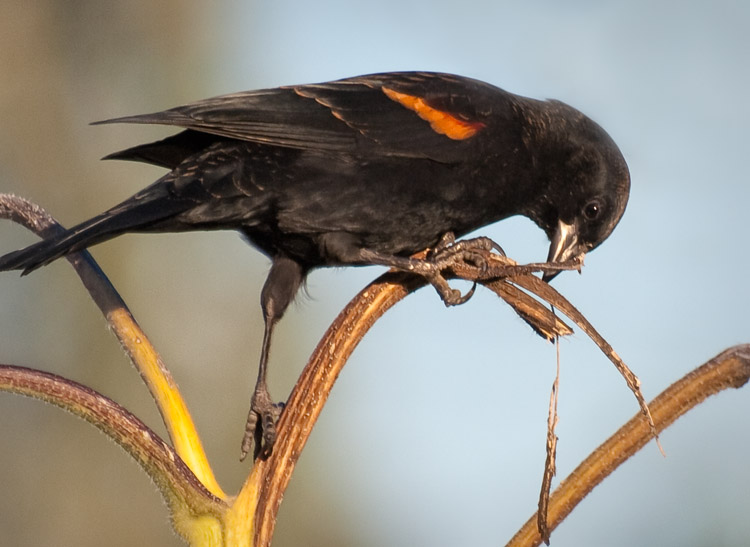
Male Red-winged Blackbird In a Seattle P-Patch – ©ingridtaylar
I looked for them in the same p-patch again this year, but they didn’t show up on my watch. I’ll continue to seek that synchronicity … of [sun]light, camera and action … the Red-winged Blackbird way.
The shots in this post were taken with my old 70-300mm Zuiko lens which was often slow to focus and not as sharp or bright as my newer glass. I’m looking forward to seeing how my 50-200mm (Zuiko) compares when grabbing focus between reeds and leaves, in variable Northwest light.
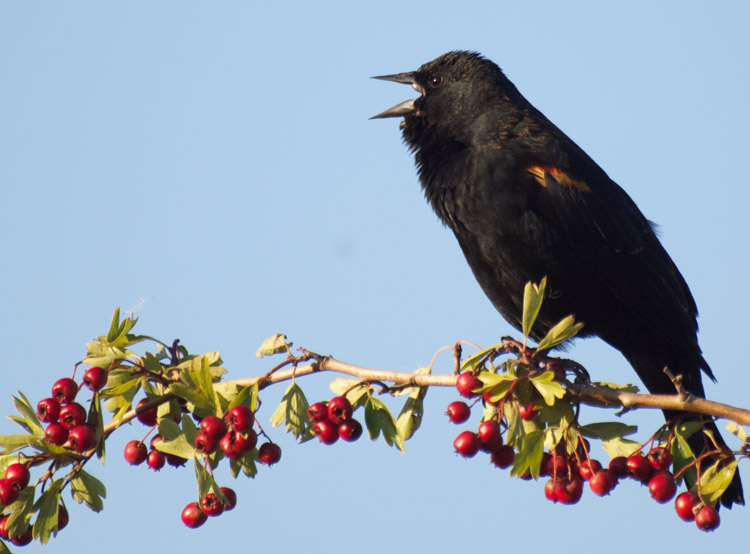
Union Bay Natural Area – Seattle – ©ingridtaylar
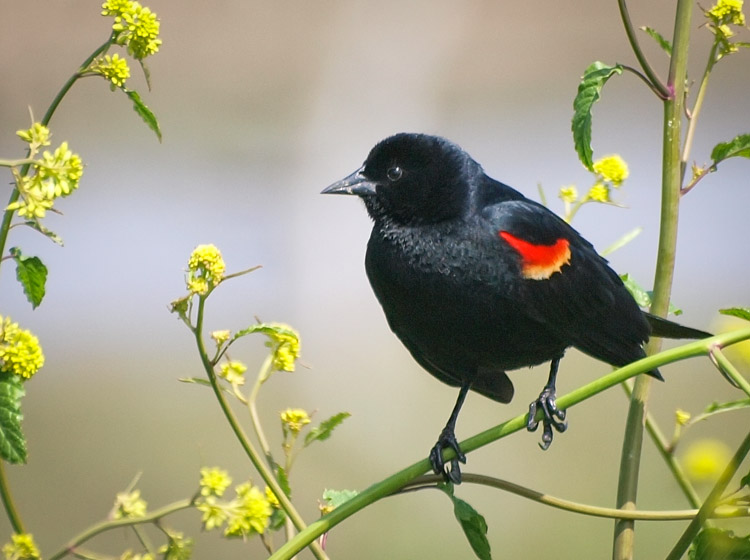
Coyote Hills Regional Park – Fremont, CA – ©ingridtaylar

I didn’t know you had posted this. Ron just posted the Yellow-headed Blackbird which reminded me of this one you’re posting. I ignored it while I was in Florida. It was the “king” at the marshes where I stayed. I loved his song. I hope next time to also take pictures of him. I was after the Great Blue Heron instead.
Maria, thank you for letting me know about Ron’s post! What stunning images of the Yellow-headed Blackbirds. I also enjoyed hearing the yellow’s call. It looks like we both have a blackbird quest in mind.
I love that first image the most. You can see all of the red down his back.
Thanks, Carol. I wish I had a photo showing the beautiful coloration on the female’s back in perfect light … but it’s nice to have something to shoot for (literally).
Hey, thanks for the post. Awesome.